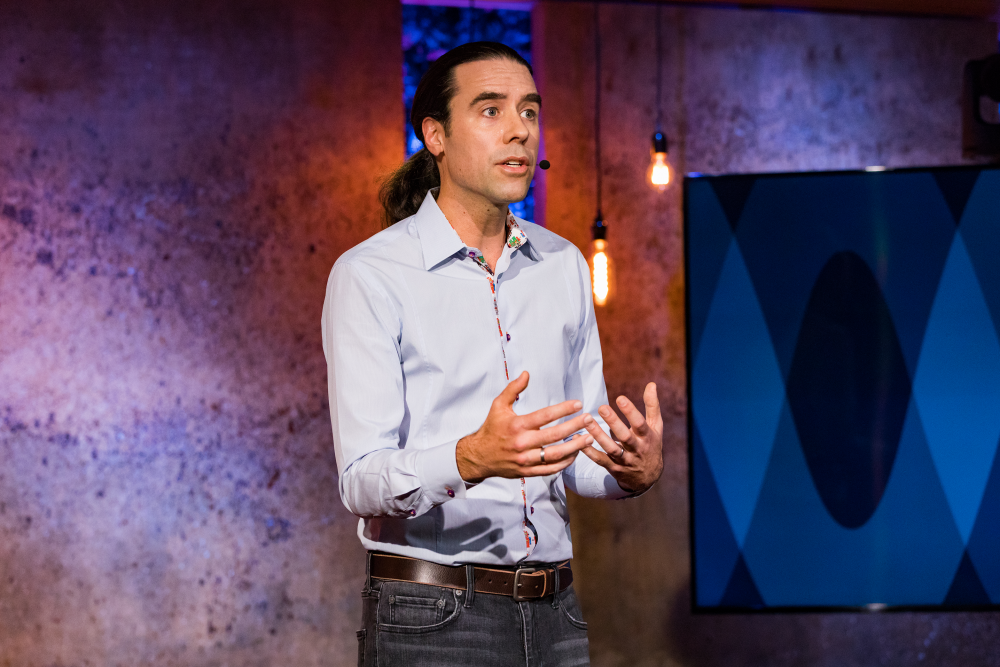
TED Talk: Shadow Learning
It has been estimated that by 2030 between one-half to one billion workers will be required to adapt to artificial intelligence (AI) — the so-called “fourth industrial revolution” — in their daily work.
While this — and much of the research conducted to date — has focused primarily on the potential efficiencies and growth afforded by AI, relatively little has been published on issues related to AI migration and worker adaptation to these technologies.
In a newly released TED Talk, Matt Beane, an assistant professor in UC Santa Barbara’s Technology Management Program, discusses how current deployment of AI is not only inhibiting critical on-the-job learning, but potentially creating obstacles to future AI adoption. In some cases, he said, workers are creating “deviant” means to acquire the training they need — a phenomenon he refers to as “shadow learning.”
The perhaps unintended and often overlooked outcome of AI and the automation of work, he posits, is the necessary role of on-the-job learning to ensure workers can continue to acquire new skills and adapt to challenges presented by AI.
“The ability to realize increased efficiency and minimize error through AI, or intelligent machines, will no doubt impact every type of industry and every type or work,” Beane said. “Unfortunately, we’ve been redesigning work to take advantage of AI far faster than we’ve been redesigning learning and development. Ironically, AI is at the center of the trouble. The way AI is currently being deployed is actually preventing workers from learning by doing — the very process required to acquire new skills and adapt to these new technologies.
In the newly released “TED Salon: The Next Wave,” a series of talks focused on the opportunities, tools and pitfalls of AI, Beane discusses his research on organizations that made use of robots — including residency programs at 18 of the top teaching hospitals throughout the United States. He found in his study of surgical training, for example, that robots were being used in a way that blocked a trainee’s ability to learn on the job and created a distance between the trainee and his or her mentor or expert.
In traditional or open surgery, the surgeon relied on the resident (or surgical trainee) to participate in the procedure. As a result, residents learned by doing. During robotic surgery, however, Beane observed something different. “Rather than having their hands in the work, residents and assistants watched the procedure on television. Their on-the-job learning was sacrificed for the sake of efficiency,” he said.
The practice residents received during robotic surgery was also lower-quality because of what Beane referred to as “helicopter teaching” — or giving frequent and very public feedback to residents and intermittently taking control of the robots away from them. Beane found that to counter this lower-quality learning experience, a small number of residents went to extreme measures, deviating from prescribed training and engaging in “shadow learning.” Some residents focused on robotic surgery in medical school at the expense of generalist training and engaged in extensive practice on simulators or watching surgeries on YouTube TEDperforming robotic surgical work with little supervision.”
“Surgeons are graduating without sufficient skills in either generalist knowledge or utilizing robotic tools due to lack of experience and lack of mentorship,” said Beane. “They may have watched it happen. But watching a surgery doesn’t make you a surgeon, similar to how watching a movie doesn’t make you an actor.”
In the past year, Beane has compared his findings with those of researchers who have examined AI’s implications in other industries such as investment banking and law enforcement. Their data showed evidence of Beane’s findings, he said. The expanded picture and proposed solutions will be published in an upcoming edition of Harvard Business Review.
Beane believes the opportunity exists to alleviate the learning and training problems associated with AI, and suggested that AI can be part of the solution: It can coach learners when they are struggling, teach coaches how and when to mentor, and connect these two groups in smart ways. He noted that some are working on systems like these, but they’re focused on formal training, while the deeper crisis is in on-the-job learning. Making progress on these issues is both critical and daunting, he noted.
“On-the-job learning is essential for millions of people in countless industries, so hopefully we’ll see more attention in this direction soon. We have to do better — much better — than the status quo.”
View the talk with transcript and footnotes on the TED website.



